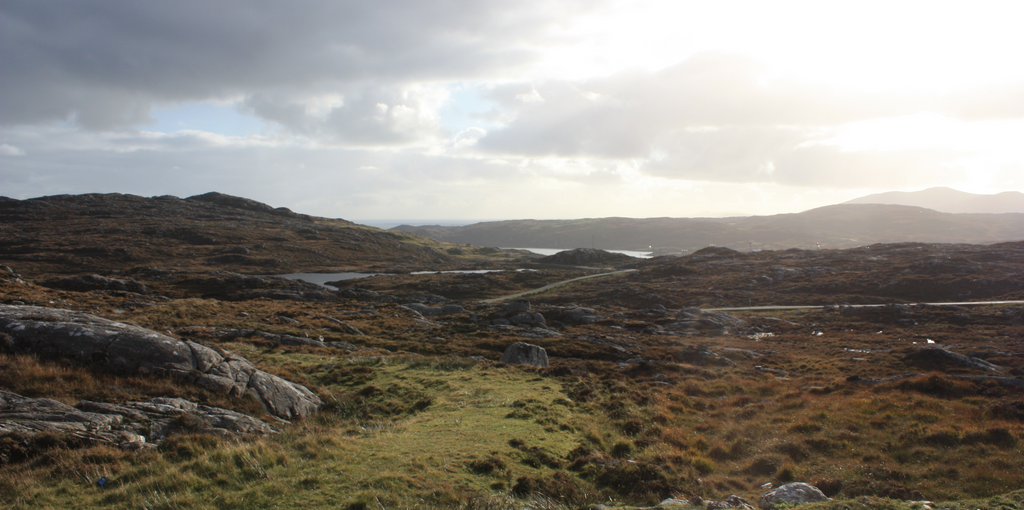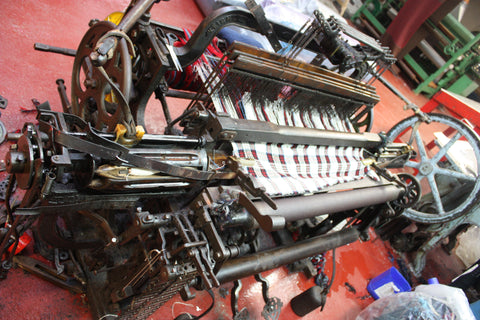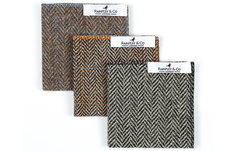A Guide To Harris Tweed
What Is Harris Tweed?
The first thing to say is that most people think of Harris Tweed as a brand, when in fact it is a type of cloth, woven in a very special form of industry on the small group of islands off the very north west coast of Scotland, beyond the Isle of Skye. No one person can own or exclusively produce Harris Tweed, and the way in which the tweed fabric is created is protected by an Act of Parliament, with the “Harris Tweed Authority”, a regulatory body based in Stornoway, guarding both the livelihoods of the islanders, the exclusivity and relatively small supply of the product, and maintaining its quality and authenticity. This body will take whatever action is necessary to protect their intellectual property in regards to the Harris Tweed fabric.

Upon arriving off the ferry in Tarbert, you are immediately met with the sight of Katherine Campbell’s shop and accompanying shed, bursting at the seams with bolts (rolls) of Harris Tweed, along with finished garments and other accessories, but the producers seem nowhere within sight or earshot. In fact, the industry as a whole is very much behind closed doors unless you go looking for it.
The Mills
In essence, there are three mills on the Islands: Shawbost, Carloway and Stornoway. These mills produce the yarn from which each bolt of cloth is woven, with The Carloway Mill being the most artisan and age old in its curiosity. Men mix piles of mixed tweed wool colours and feed it into a hopper, where it is “teased” and “carded” into yarn, which is fascinating in itself, as an apparently simple in appearance brown jacket can actually be made of a yarn that contains many, many different colours….in so many ways there is far more to these islands, and these people, than meets the eye, and the cloth embodies this spirit.

The finished yarn is then taken to the home of a weaver on the islands, who retreats to their weaving shed to begin pedalling at their loom to create a cloth from all these spun fibres. Any mechanical assistance is heresy, with tales of a weaver who was found to be using an electric motor swiftly dealt with. How the cloth is created requires a great understanding between mill and weaver – it’s not only about the colour of the yarn of which the cloth is made, but how it is intertwined. Herringbone? Twill? Overchecks of different colours of yarn to accent the main cloth colour? How wide should the heddles be set on the loom? How often should the overcheck shuttle be sent through the weft? The instructions to the weaver read like some code or hieroglyphics giving clear instructions to create the final tweed fabric.
Once the weaver’s work is done (and they often work at strange hours, including through the night), the mills collect the resulting cloth and return to their place of work for washing, darning (any broken threads), pressing and finishing. It’s so artisan, so alien to us in a world of automated production that an industry should be this way, and yet that’s the very reason Harris Tweed is so special. One of the things that is so fascinating about the industry, is how there is a sense of mutual dependency on the islands on the tweed material and an inextricable link to the residents wellbeing, without yarn the weavers have nothing to work with, but without weavers, the yarn from the mill is of little use. After many years of difficult times however, the hand of fashion has lifted tweed up with the jump in popularity of the tweed jacket and other tweed accessories, and now times are progressing nicely, not least because of the team at Harris Tweed Hebrides, the mill in Shawbost, with their creative approach and willingness to embrace social media. Equally, The Carloway Mill boasts some of the most famous names in fashion on its order board for delivery.
As you hold your own piece of the Outer Hebrides, remember that every inch of it has passed through the loom of a skilled weaver, and what we really appreciate, is that in a world where we have so much disconnection from the products we buy, and where people in manufacturing can become additional machinery, it is truly a special cloth, and the history and craftsmanship that goes into it’s production should be treasured.
Colours and Patterns
Harris Tweed has an aura of earthiness, with links to the landscape around it from which the makers often draw its inspiration. For this reason its traditional colours are browns and greens, with the occasional bold check, such as the Royal Tartan or the Macleod Tartan.
Harris Tweed can come in numerous combinations of patterns and colours to give its very distinctive look. However, as set out by The Harris Tweed Authority there are four patterns that are the most popular and therefore the more recognisable. The most popular of all patterns is the plain twill. It is characterised by distinct diagonal effects in the cloth where the interlacing points of warp and weft move left or right and upwards or downwards. Twill weaves which show the diagonal effect running from bottom left to top right are referred to as twill right.

Houndstooth, houndstooth check or hound’s tooth, also known as dogstooth, dogtooth or dog’s tooth, is a duotone textile pattern characterized by broken checks or abstract four-pointed shapes, often in black and white, although other colours are used. The classic houndstooth pattern is an example of a tessellation.
Herringbone describes a distinctive V-shaped weaving pattern usually found in twill fabric. It is distinguished from a plain chevron by the break at reversal, which makes it resemble a broken zigzag. The pattern is called herringbone because it resembles the skeleton of a herring fish. Finally, a plaid is a pattern consisting of crossed horizontal and vertical bands in two or more colors in woven cloth. A common example of a plaid pattern used in Harris Tweed would be the Black Watch tartan.
The weight of Harris Tweeds means it has traditionally meant that it was (and arguably is) associated with autumn and winter wear (and therefore collections to match, in the fashion world). However the reality is that it is possible to make the cloth in any colour, any weave pattern, and any overcheck colour.
Tweed Infographic
Below is a brilliant summary infographic on The History of Tweed that has been put together by our friends at Rydale.

Final Thoughts
This got us thinking, if pocket squares and pocket handkerchiefs are really only worn as an accent, as a little touch of dash to enhance a jacket or blazer, then why not Harris Tweed?
For more insights into how to truly dress with style, we've also created a guide that pulls all the key elements together in a short eBook which you can download here: 13 Essential Rules To Dressing Like A Gentleman

